The easiest way to know how many PCIe slots you have is to check on the motherboard manufacturer’s website. Another way is to look at the user guide that came with the board. Using third-party software can also help, and for the more technically inclined, you can open up the motherboard and count how many slots you have manually.
Motherboards come with PCIe slots which allow users to install extra hardware to improve or extend the system’s performance. These are known as PCIe expansion cards or add-in cards.
But, PCIe slots are limited depending on the motherboard model. Their sizes also differ. If you want to know how many PCIe slots you have, there are a couple of ways to go about it, and we will discuss these below.
It is also worth noting that the number of slots you have DOES NOT correspond to the amount of PCIe lanes you have.
Before investing in an expansion card, check your motherboard slots and the number of PCIe lanes.
I recommend reading this article to learn about PCIe lanes and how many you have.
Types of PCIe Slots
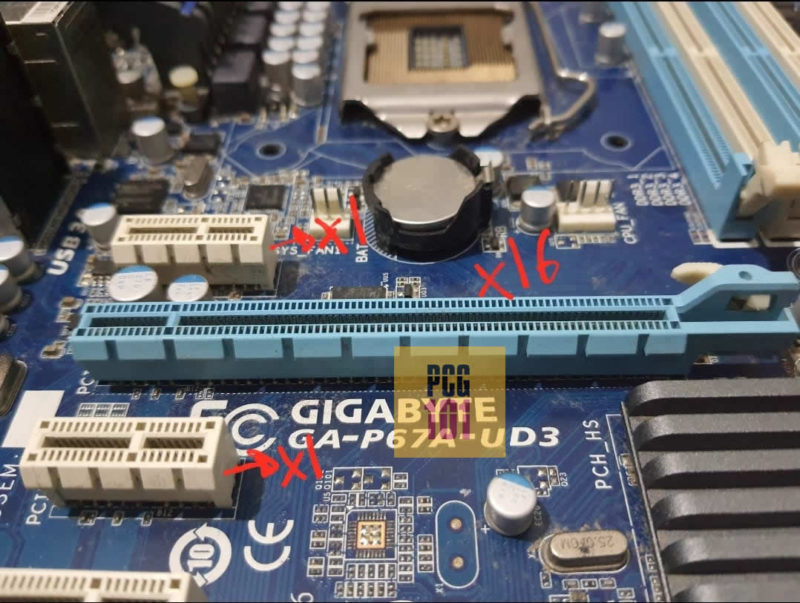
Before discussing how many slots you have, it is essential to learn what kind of PCIe slots are available.
There are generally four types of PCIe slots:
- x16 Slot – This is the largest slot with 16 lanes. Typically used for graphics cards.
- x16 slot with x8 bandwidth – This has the size of an x16 slot but only half the PCIe lanes. It is also used by graphics cards often for multi-GPU configuration.
- x4 Slot – This has 4 PCIe lanes – It is used for more demanding cards like 10G Ethernet, NVMe M.2 SSD Expansion, 4K video capture cards, etc.
- x1 Slot – This has a single PCIe lane – It is used for a weaker card like a sound card, 1G network adapter, USB hubs, etc.
Also Read: 10 Things That Can Be Plugged in PCIe Slots
How Many PCIe Slots Do I Have?
Determining the number of PCIe slots on your computer isn’t too hard. You need to know where to look for, and you will come up with answers very quickly, but here are a few easy ways:
- Check the Manufacturer’s Website
- Consult Motherboard User Guide or Manual
- Use a Third Party Software
- Manual Inspection
1. Check the Manufacturer’s Website
Checking the manufacturer’s website is the easiest way to access accurate information about your motherboard.
You will need to know the model number of your motherboard, though, to look it up online.
Finding Out Motherboard Model Number
The simplest way to check out the make and model of your motherboard is to open the System Information service on Windows.
To do this, type “System Information” in the search bar of your Windows PC and open the service. Look for columns “System Manufacturer” and “System Model.” You can also look into columns: “Baseboard Manufacturer” and “BaseBoard Product.”
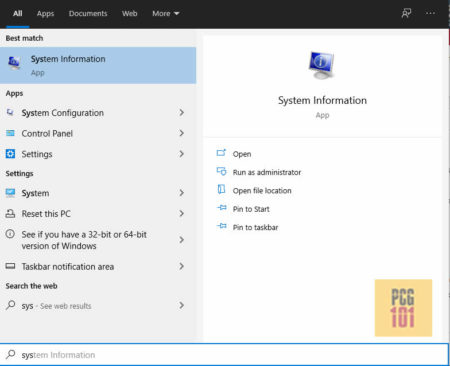
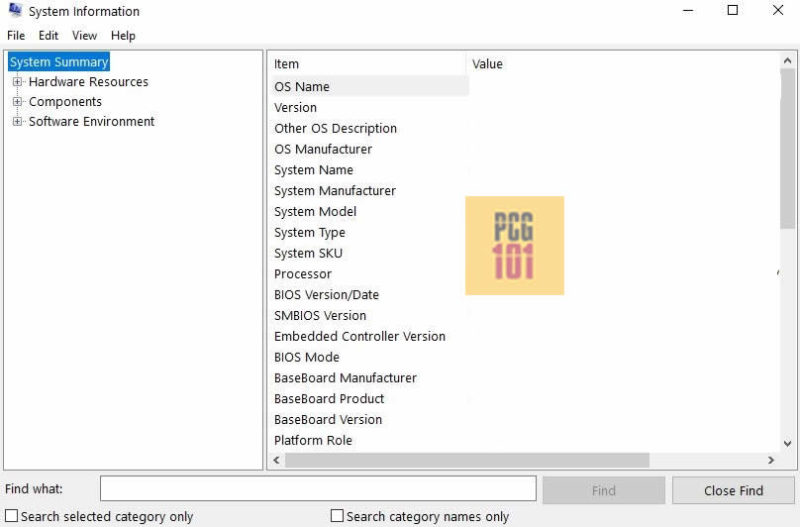
From here, you should be able to figure out the make and model of your motherboard.
The other way is to check the motherboard physically. Almost all motherboards have the make and model number written on them.

Head Over to Manufacturer’s Site
Once you have the make and model number, open up Google and search for it.
Find the model matching yours and look for its specifications page or tab. This will have various information about the motherboard, including its PCIe slots, their slot types, and in some cases, a visual representation of where exactly a specific PCIe slot is on the motherboard.
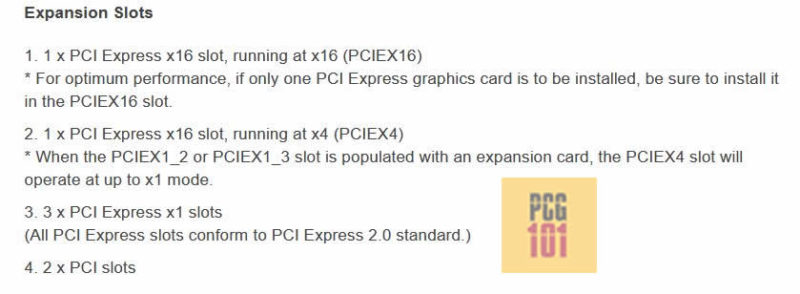
The official specifications like the one above tell you many PCIe slots you have and what type, size, and version they are.
For instance, this motherboard has 1 x PCIe x16 slot and another x16 slot in x4 bandwidth. Meaning despite the second slot having a full 16x size, it only offers four lanes. (To a standard observer, both x16 slots have the same number of lanes. However, in reality, this is not the case. Hence looking up specifications is very important).
The specifications also say it offers 3 x smaller x1 PCIe slots for smaller cards like network adapters, sound cards, etc.
In addition to that, since this is an older board, it also offers the old PCI slots (these are less obsolete now).
Moreover, the specifications also tell you about the PCIe version. This motherboard conforms to the older PCIe v2.0.
Also Read: PCIe 3.0 vs. 2.0
PCIe Slots and PCIe Lanes
As mentioned earlier, the number of PCIe slots available does not correspond to the number of PCIe lanes available.
A PCIe lane is a pipeline that transfers data to and from a PCIe slot. The number of pipelines you have is limited, and they depend upon the type of motherboard and CPU you have: (Read: How to Check How Many PCIe Lanes Do I Have?)
So a typical PC can have 20 PCIe lanes. Each expansion card installed on the PCIe slot has a specific requirement for how many PCIe lanes it requires to operate optimally.
A graphics card, for example, requires 16 lanes. On the other hand, an Ethernet adapter requires a single PCIe lane most of the time.
So if your motherboard offers 1 x X16 slot with 16 lanes, 1 x X4 slot with four lanes, and 3 x X1 places with one lane each, but if your system only has 20 PCIe lanes, then some of the slots will NOT be operable.
Again, the motherboard specification sheet provides the exact configuration of the board and the slots.
Also Read: What are PCIe Lanes?
2. Consult Motherboard User Guide or Manual
Another reasonably simple method to check the kind and amount of PCIe slots you have is to check the user guide/manual.
Your motherboard will likely ship with a user guide. This document tells you how to take care of your motherboard and is also a treasure trove of information regarding the motherboard pieces.
To find how many PCIe slots you have from the user guide, read through it, and if it has a section on PCIe slots, skip over to it.
Many user guides also label every component on the motherboard.
The user guide can be your first step to getting information on your motherboard. It can be so beneficial that you won’t need to visit the manufacturer’s website or any other online resource.
Unfortunately, if you have an older PC, there are chances that you may have misplaced it. Don’t fret; you can always use the other methods listed here.
3. Use a Third Party Software
Some third-party applications can scrape a lot of information from your hardware, including information about how many PCIe slots you have, and present it to you.
That said, you can use a program like HWiNFO on Windows to find out how many PCIe slots you have. This is FREE software, fortunately.
Check PCIe Slot Using HWiNFO
Note that the following demonstration and sample are for checking the PCIe version and slot on a laptop motherboard. For a desktop, the same procedure can work.
Step 1
Download and install HWiNFO from their website. Then, run it on your computer.
Step 2
Once downloaded, you will be given two-run files, HWiNFO32.exe and HWiNFO64.exe. Select the run file depending on your system architecture.
Also Read: How to Check What is My System Architecture?
Step 3
This will open a small options window. DO NOT select any check boxes on the side and press RUN.

This should open a comprehensive system of information.
Step 4:
Once the program runs, expand the “Motherboard” section on the left. Then look for an option called “System Slot.” In the case of my laptop, this is located under “Motherboard” -> “SMBIOS DMI” -> “System Slot.”
Step 5:
This should open up a list of PCIe slots you have. Select any. On the right-hand side, it should tell you its information, such as its size and the version.
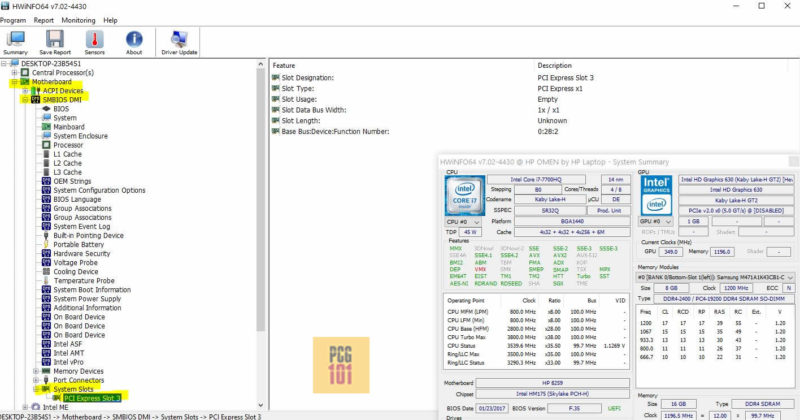
So in my laptop’s case, I have a single free x1 slot. Its version is PCIe 3.0.
On a typical desktop motherboard, the list of slots will be more comprehensive.
However, as this post explains, the PCIe slot information shown in HWiNFO may not always be accurate.
4. Manual Inspection
If the motherboard is new and has not yet been installed in a computer, or if it has already been installed, but you can quickly access it, you can go ahead and check the slots manually and count them to find out just how many you have.
As mentioned earlier in this article, there are various PCIe slot sizes on the motherboard, denoted by X1, X4, X8, and X16, which refer to the number of lanes.
Nevertheless, a slot may have an X16 size but only have four lanes instead of 16, as is the case with Gigabyte GA-p67A-UD3 below.
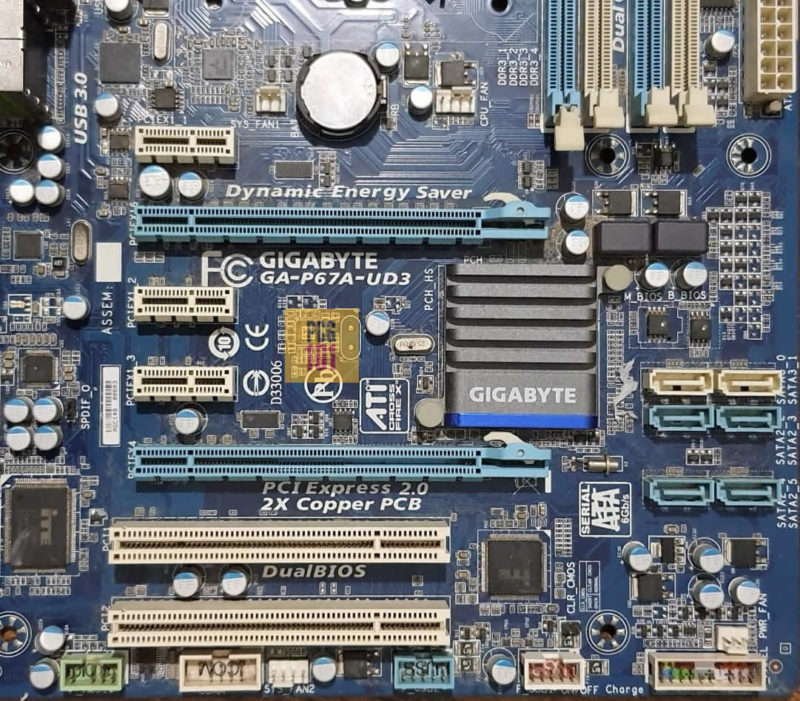
Image Source: This motherboard has 2 x PCIe x16 slots (Blue ones). However, the second PCIe x16 space only operates at x4 bandwidth. Its other ports are 3 x X1 slots and 2 x PCI slots (These are now obsolete).
For a motherboard that’s already installed, you will need to switch off the computer and unplug it from power before opening it up. You can take extra measures to avoid electrostatic damage.
Once you can access the motherboard, finding out exactly how many PCIe slots I have will involve identifying and counting the places. You may even determine the slot size if you need that information.
While, as mentioned earlier, this is not the most accurate method for figuring out the type of PCIe slot you have, you can reduce your chances of error by understanding some general rules for consumer-grade motherboards:
- The first PCIe x16 slot always has 16 lanes of bandwidth – use this slot for the graphics card.
- If available, the second PCIe x16 slot (if available) is the only confusing aspect, primarily as it can have x8 or x4 capacity.
Final Words
As seen above, there are many ways to check how many PCIe slots you have. If you are a new PC builder or planning on installing a new device, then understanding the PCIe slots is essential.
However, understanding PCIe slots is only one part of the equation. You also have to understand PCIe lanes and lane count.
You can check out our comprehensive knowledge base here on PCIe.
Also Read: What are PCIe Slots and Their Uses? – Beginners Guide
FREQUENTLY ASKED QUESTIONS
1. Can I add more PCIe slots to my existing motherboard?
No, you cannot add more PCIe slots to an existing motherboard. PCIe slots are a part of the motherboard’s hardware, and their number and type are predetermined. If you need more PCIe slots, you will need to replace your motherboard with one that has more slots.
2. How do I identify the type of PCIe slot on my motherboard?
To identify the type of PCIe slot on your motherboard, you can look at the physical size of the slot. PCIe slots come in different sizes, including PCIe x1, PCIe x4, PCIe x8, and PCIe x16. You can also refer to your motherboard’s manual or specifications to determine the type of PCIe slots available.
3. How do I determine the bandwidth of each PCIe slot on my motherboard?
To determine the bandwidth of each PCIe slot on your motherboard, you can refer to your motherboard’s manual or specifications. PCIe slots have different bandwidths depending on their type and version. PCIe 3.0 slots have a bandwidth of 1 GB/s per lane, while PCIe 4.0 slots have a bandwidth of 2 GB/s per lane.
4. How do I troubleshoot issues with my PCIe slots, such as hardware conflicts or compatibility problems?
If you are experiencing issues with your PCIe slots, such as hardware conflicts or compatibility problems, you can try the following steps:
1. Ensure that the PCIe card is securely seated in the slot.
2. Update the BIOS of your motherboard to the latest version.
3. Check if the PCIe card is compatible with your motherboard.
4. Try using the PCIe card in a different slot, if available.
5. Test the PCIe card on a different system to rule out any hardware issues. If the above steps do not resolve the issue, you may need to contact your motherboard or PCIe card manufacturer for further assistance.
